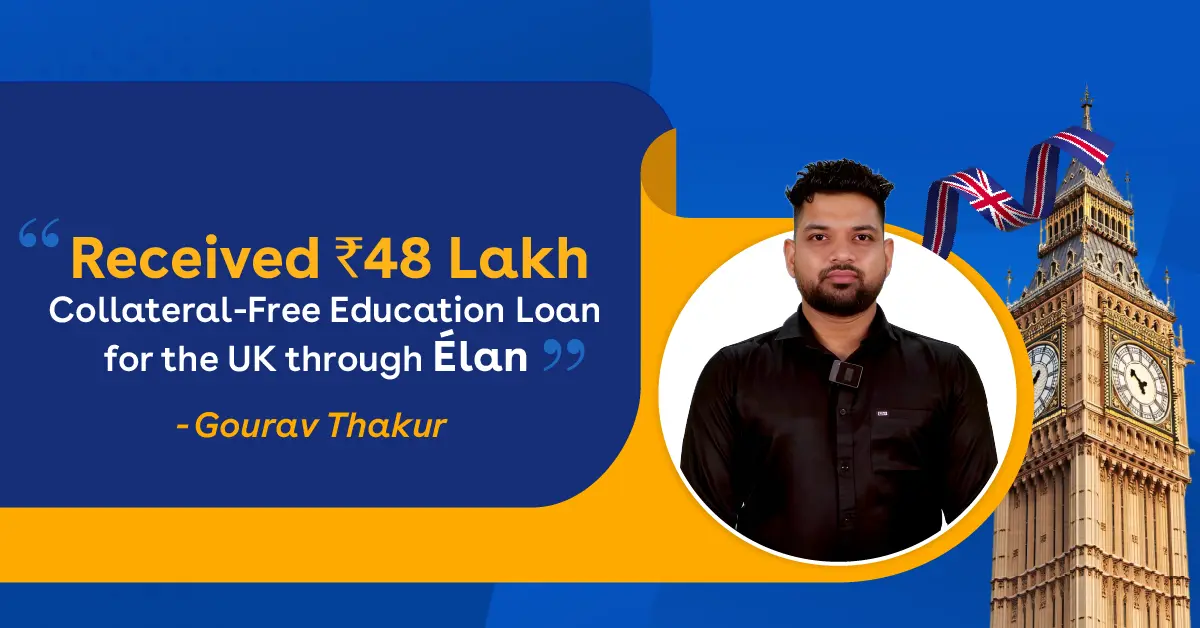Jan 04, 2025
Second Education Loan for Studying Abroad: Understanding the Possibilities & Solutions
Imagine walking across the campus of your dream university abroad and being all set to experience a world of opportunities. For many students, this vision is only possible with the right financial support. Investing in education is certainly one of the most rewarding investments you can make. When it comes to funding overseas education, the cost of education is comparatively higher than studying in your country.
In the reality of financing higher education for studying abroad specifically when it involves taking a ‘Second Education Loan’, it might be a bit wearisome. To familiarise you with this new terminology, a second education loan is generally the need to borrow money for the next degree while having an existing loan. The process of obtaining additional funding can be complex, and understanding RBI norms or international loan requirements may feel confusing to education loan applicants.
Whether it’s about dealing with existing liabilities or exploring new avenues for overseas funding, this comprehensive article will walk you through everything you need to know. From real-life scenarios to actionable solutions, we are here to help you make informed decisions so you can confidently pursue your educational goals in a foreign land. Keep reading to explore the possibility of taking a second foreign education loan for your higher studies.
Second Education Loan for Studying Abroad: Analyzing the Possibilities
1. Top-Up Loan on an Existing Secured Loan
Scenario: You already have a secured education loan of INR 15 lakhs for your bachelor’s degree and now require INR 45 lakhs for your master’s degree abroad. You wish to stick with the same bank for your overseas funding and now the total loan requirement will go to INR 60 lakhs.
Solution
Continuing with the same lender simplifies a lot of things and a top-up loan on your existing collateral is your best bet. Here’s how it works.
-
Ensure the value of your property is over INR 60 lakhs as this higher valuation is necessary to securing additional funds.
-
Reach out to the bank’s zonal office to get a deviation for extending the moratorium period. Adjusting to your new loan requirements will omit the need for paying EMIs after your first loan.
This approach allows you to continue your existing loan while expanding your funding options for advanced studies.
2. Switching Banks for a Better Interest Rate
Scenario: You have an education loan for your bachelor’s degree from a nationalized bank with an 11.75% interest rate. Now, you found another bank offering a much lower rate of 9.25%. So, for better interest rates you are now seeking new options.
Solution
This is a great opportunity to save on interest costs using the take-over loan process:
-
In this case, the new bank clears your existing loan balance by paying it directly to the previous bank.
-
Once the dues are cleared, you obtain a no-dues certificate or a closure statement to finalize the transfer.
Alternatively, the second bank may conduct a property and loan transfer, evaluating the property value and outstanding balance to ensure a smooth transition. With this strategy, you not only lower your student loan interest rates but also get better repayment terms and additional tenure.
3. Moving from an Unsecured Loan to Secured or International Options
Scenario: Your first education loan for your bachelor’s degree was unsecured, but you now need a larger amount for your master’s degree. Since Indian Banks provide up to INR 7.5 lakhs for an unsecured loan, you will be required to pledge security for your master's degree.
Solution
As no collateral was pledged for the initial loan, you are free to explore fresh funding options:
-
Approach a new bank or financial institution for your master's degree loan.
-
Some banks may require a no-dues certificate for the first loan, while others may disregard it and directly approve your new loan. So, choose your financial lender accordingly.
This flexibility allows you to choose from a range of lenders and funding options that align with your goals.
4. Lack of Collateral Security for Additional Loans
Scenario: Your property is already mortgaged for your bachelor’s degree loan, and there isn’t enough remaining value to secure another loan for a master's degree abroad.
Solution
When local options are limited due to the RBI guidelines for second education loans, international lenders step in with non collateral education loans. These lenders focus on factors like:
-
Your academic performance and test scores.
-
The reputation of your chosen university and course.
This eliminates the need for parental property or financial guarantees, making it a hassle-free option for students in similar situations.
5. Bridging the Gap When Existing Loans Are Insufficient
Scenario: You secured INR 25 lakhs for your master’s degree based on your property, but the cost of education is INR 60 lakhs, leaving a gap of INR 40 lakhs. You will need to get a second education loan for studying abroad to fund the difference
Solution
For the shortfall, you can opt for an unsecured loan from international lenders or foreign-based banks. These loans often cover substantial education costs without requiring additional collateral. Experts at Team Élan can guide you in identifying lenders offering the best terms, ensuring a smooth and efficient loan process.
6. Overcoming RBI Restrictions After Taking a Personal Loan
Scenario: You have taken a personal loan of INR 10 lakhs based on your existing financial history from an Indian bank. Your existing personal loan disqualifies you from applying for an education loan under RBI norms.
Solution
Wondering what to do next, then here’s how you can overcome this roadblock:
-
For students planning to study in the USA, finding a US-based co-signer significantly enhances your eligibility for international loans.
-
If heading to another country, then consider international lenders who overlook your Indian credit history and focus solely on your academic credentials.
This solution ensures you are not held back by past financial decisions and can proceed with your education goals with a second education loan.
To conclude this article, financing your higher education abroad is a journey that demands careful planning and the right support. While securing a second education loan may seem like a complex maze, the solutions outlined above prove that no hurdle is undefeatable. Whether you are exploring top-up loans, transferring lenders for better terms, or seeking help from international lenders, there is always a path forward.
At Élan Overseas Education Loans, we specialize in simplifying these processes and providing solutions for even the most challenging profiles. No matter where you are in your education loan journey, our Expert Overseas Education Loan Advisors are here to guide you at every step of the process. From understanding your loan preferences to answering your queries regarding which bank has the lowest interest rate on education loans, team Élan is available virtually and in office for counselling.
Reach out to Élan Overseas Education Loans today and take the first step towards finding your perfect funding possibility!

- Share this Article
Articles on Overseas Education Loans

Education Loan for Europe
In recent years, rising tuition fees, stricter admission criteria, and increasingly...Nov 27, 2025

Success Story Gourav Thakur
Every student’s journey toward studying abroad is different; some...Nov 21, 2025

Overseas Education Loan Disbursement Process
Imagine you’ve finally received your education loan approval, that long-awaited...Nov 19, 2025

 Login
Login